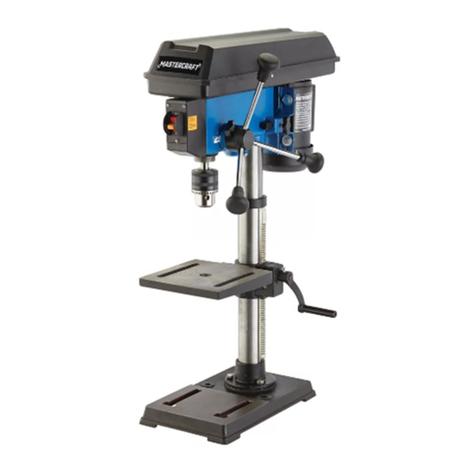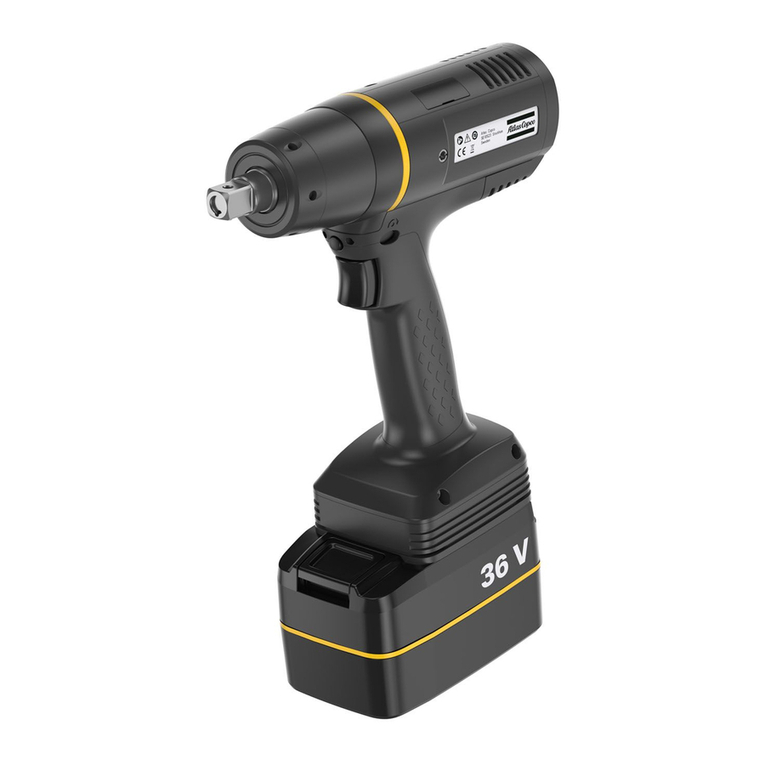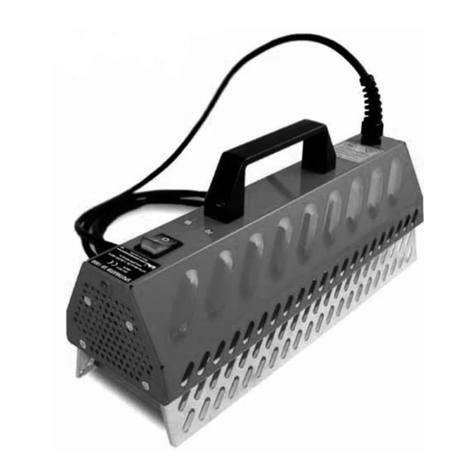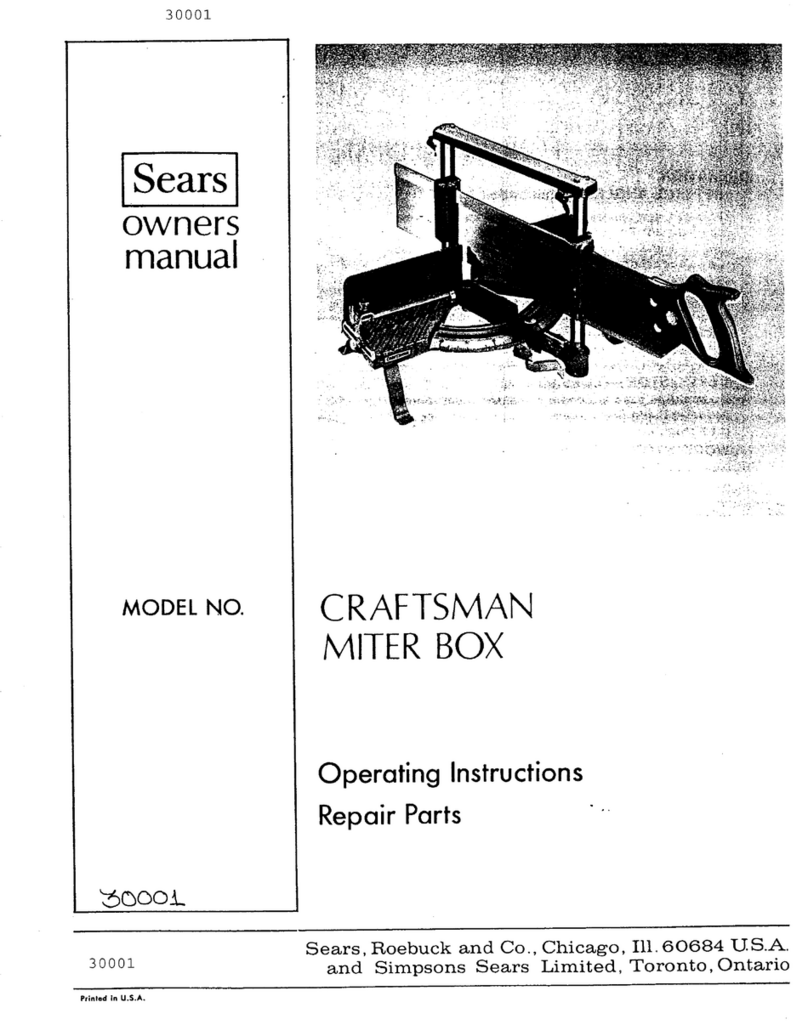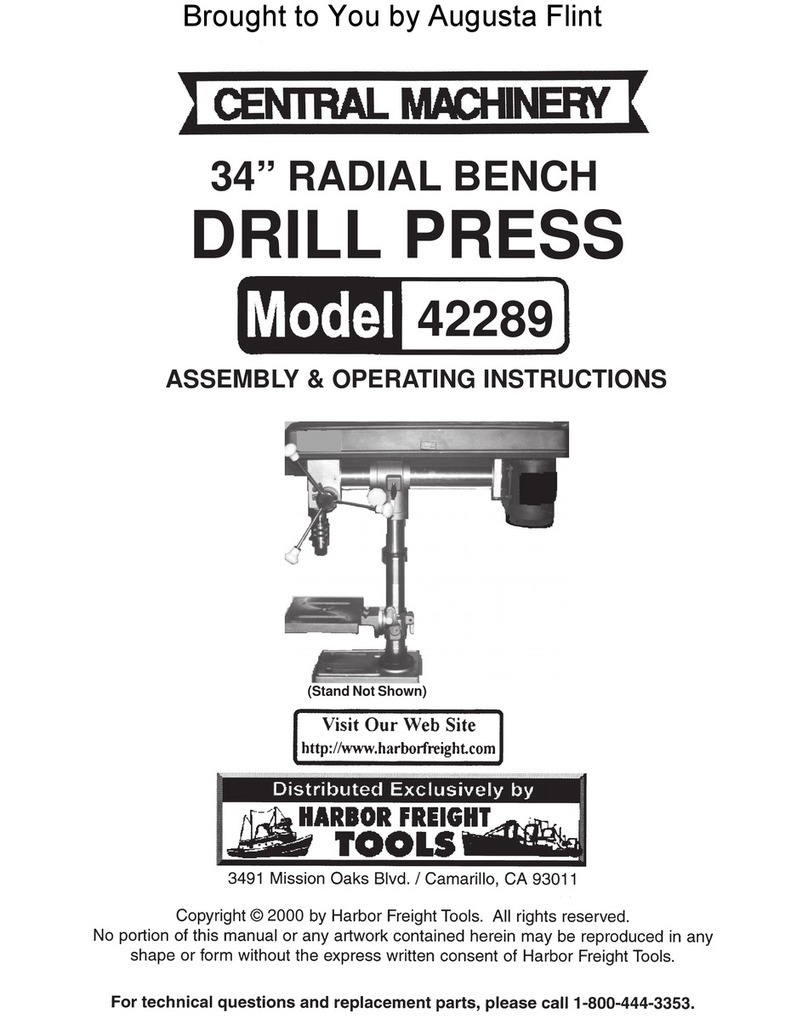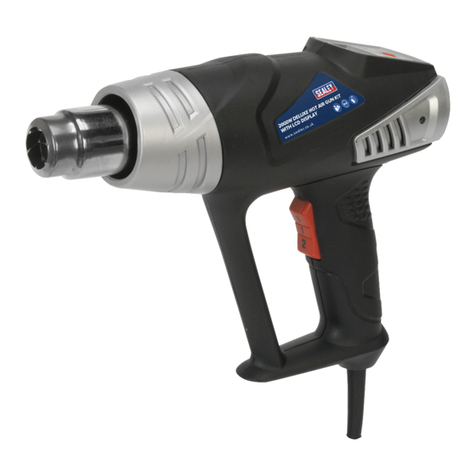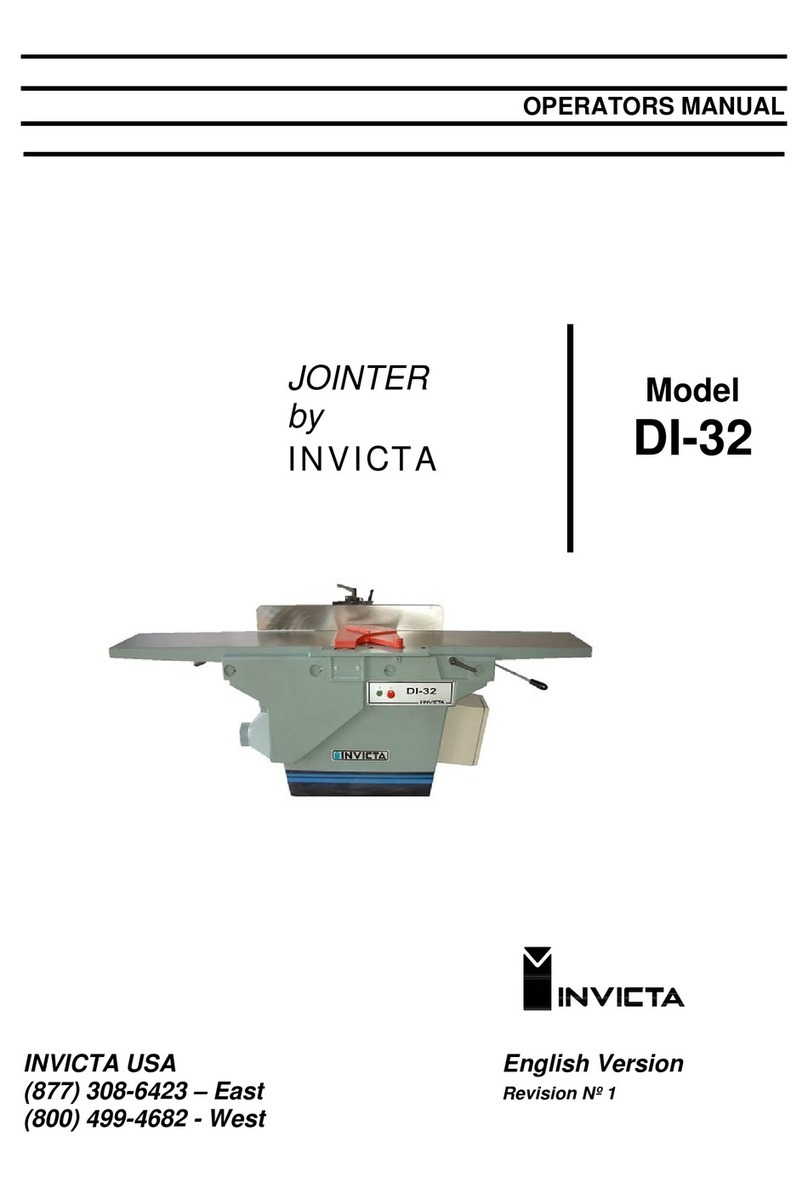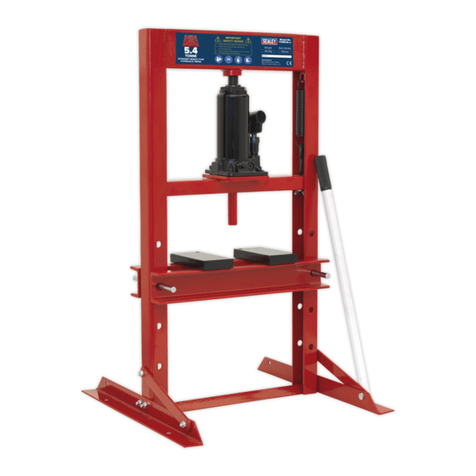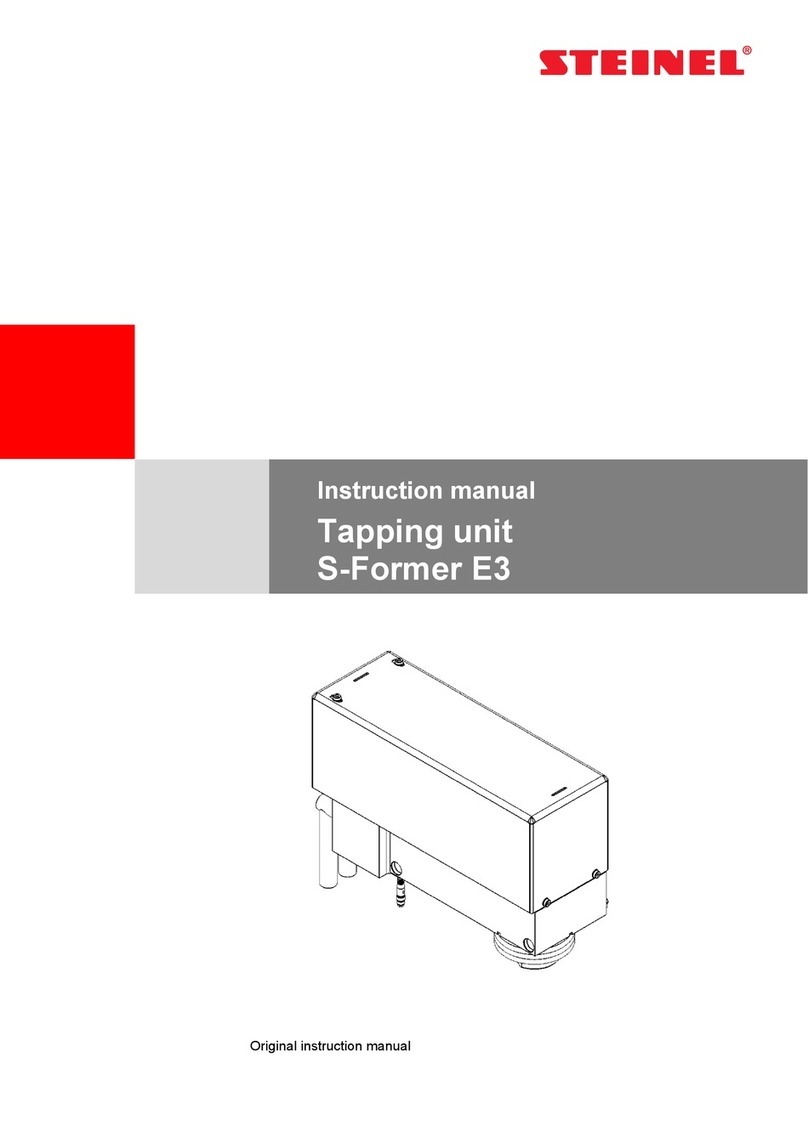ToolMaster Industrial ATS-255 User manual

1
www.machineryhouse.com.au
www.machineryhouse.co.nz
Industrial Series
AiR METAL SHEARS
INSTRUCTION MANUAL
Order Code: A085
www.machineryhouse.com.au www.machineryhouse.co.nz
ATS-255

2
www.machineryhouse.com.au
www.machineryhouse.co.nz
1. Read and understand this entire manual before
attempting assembly or operation.
2. Read and understand all warnings posted on
the tool and in this manual. Failure to comply
with all of these warnings may cause serious
injury.
3. Replace warning labels if they become
obscured or removed.
4. Do not use this tool for other than its intended
use. If used for other purposes, Toolmaster
disclaims any real or implied warranty and
holds itself harmless from any injury that may
result from that use.
5. Always wear approved safety glasses or face
shield while using this tool. (Everyday eye
glasses only have impact resistant lenses; they
are not safety glasses.)
6. Wear ear protectors (plugs or muffs) if the
noise exceeds safe levels.
7. Wear gloves and protective clothing if
operationproducessparksoryingparticles.
Glovesshouldbetight-tting,withoutfrayed
ngersorhangingthreads.Keephandsand
body away from the working area of tool.
8. Do not operate an air tool continually at full
throttle without a work load on the tool.
9. The air tool must be properly lubricated
before operating.
10. Never start a percussion type air tool (chipper,
breaker, buster, etc.) without securing the
tooling in the retainer and placing the tip
against the work surface.
11. Do not operate air tool without its guards in
place. Do not modify the tool.
12. Do not operate this tool while tired or under the
inuenceofdrugs,alcohol,oranymedication.
13. Adopt a comfortable posture with proper
balance,and maintain secure footing at all
times.Non-slipfootwearoranti-skidoorstrips
are recommended.
14.Donotwearlooseclothingorjewellery.Conne
long hair.
15. Excessive air pressure and too much free
rotation may decrease life of the tool and may
cause a hazardous situation.
16. Check air hoses for wear, and keep them away
from heat and sharp edges. Repair or replace
damaged air hose immediately. Do not carry
tool by the air hose.
17. Air hose may cause tripping hazards; keep hose
awayfromtrafcareas.
18.Donotusethistoolnearammableobjects,or
in potentially explosive environments. Do not
use near live electrical wires.
19. Do not use power tools in damp or wet location,
orexposethemtorain.Keepworkareawell
lighted.
20. Do not leave a connected tool unattended.
When not in use, disconnect tool from air
source.
21. Shut off air supply and discharge any residual
pressure from tool before removing hose,
making adjustments, changing accessories, or
storing tool.
22.Makesuretoolisswitchedoff,andyournger
off the trigger, before connecting to air supply.
Remove adjusting keys before operating.
24.Keepvisitorsasafedistancefromthework
area.Keepchildrenaway.
Safety Air Tool Warnings

3
www.machineryhouse.com.au
www.machineryhouse.co.nz
Warning: Some dust, fumes and gases created by power sanding, sawing, grinding,
drilling, welding and other construction activities contain chemicals that may cause cancer and birth
defects or other reproductive harm. Some examples of these chemicals are:
• Lead from lead based paint.
• Crystalline silica from bricks, cement and other masonry products.
• Arsenic and chromium from chemically treated timber.
Your risk of exposure varies, depending on how often you do this type of work. To reduce your
exposure to these chemicals, work in a well-ventilated area and work with approved safety
equipment, such as dust masks that are specically designed to lter out microscopic particles.
Technical Specications
Safety Specic For Air Metal Shear
1. ATS-255 shear is designed for cutting sheet
material, such as steel, aluminium and plastics.
If you are not familiar with the proper and safe
operation of a pneumatic shear, do not use
until proper training and knowledge have been
obtained.
2. Secure the workpiece with clamps or in a vise.
Keepbothhandsontooltopreventlossof
control.
3. Keephandsawayfromthereciprocating
blades.
4. Replace blades if they become damaged or
dull.
4. Do not lubricate the tool with combustible
liquids, such as kerosene, diesel or jet fuel.
5. Do not dispose of this tool with normal
household waste. Never dispose of the air tool
intore.
6. Use only recommended accessories; improper
accessories may be hazardous.
7. Maintaintoolswithcare.Keepairtoolclean
and oiled for best and safest performance
Capacity (Mild Steel) 1.2mm
Capacity (Aluminium) 1.6mm
Length 255mm
Strokes per Minute 2500
Swivel Head 360 deg.
Motor Type Air Rotor
Air Consumption 4.5 CFM (127 L/min)
Sound Pressure 85.5dBA
Maximum Air Pressure 90 PSI
Recommended Air Hose 10mm
Inlet 1/4” BSPT
Weight 1.1kg

4
www.machineryhouse.com.au
www.machineryhouse.co.nz
Any missing parts or damage should be reported immediately to your Toolmaster distributor. Do not use
a damaged tool. Read this instruction manual thoroughly for operation, maintenance and safety
Instructions. The diagram below is the ideal setup position. The lubricator is optional and if not used, then
a few drops of Pneumatic Tool Oil need to be added to the airline connection before operation. Add a few
more drops after each hour of continual use.
WARNING: Operating the tool at pressures over the rated capacity may cause severe
damage and/or personal injury. Do not exceed 90 PSI while operating the tool. Do not
use an accessory rated at a lower maximum pressure than the tool.
C
ompressor
A
ir
H
ose
F
ilter
r
egulAtor
l
ubriCAtor
A
ir
H
ose
C
oupler
& F
itting
t
ool
Fig. 1
Setup
The recommended air system is shown in Fig.1.
1. Useproperairhosesize(refertotoolspecications).Thehoseshouldbejustlongenoughto
serve the working area. Excessive hose length will cause pressure drop.
WARNING! Ensure that the air supply is clean and does not exceed 90psi. Too high an air
pressure and/or unclean air will shorten the life of the air tool due to accelerated wear,
and may cause damage and/or personal injury.
2. Drain the compressor air tank daily. Water in the air line will damage the air tool.
3. Cleanthecompressorairinletlterscreenweekly.
4. Line pressure should be increased to compensate for unusually long air hoses (over 8 meters).
Theminimumhoseboreshouldbe10mmandttingsmusthavethesameinsidedimensions.
5. Keephosesawayfromheat,oilandsharpedges.Checkhosesforwear,andmakecertainthatall
connections are secure.
IMPORTANT: The leader hose is optional, but connecting a quick-change coupling directly to the
tool is not recommended, as vibration may cause the connection to fail. For the best result, add a
leader hose and install any quick-change couplings further down the line.
Air Supply
l
eAder
H
ose

5
www.machineryhouse.com.au
www.machineryhouse.co.nz
Operating Instructions
1. Remove protective cap from air inlet (Fig. 1). If an in-line oiler is not being used, add 4 or 5 drops of
air tool oil (not included) into the air inlet.
2. Blow out air line to remove any dirt or moisture, then connect air supply hose to tool. Set air
pressure to 90 psi.
3. Place cutting blades against workpiece, and both hands on tool.
4. To swivel head, loosen (do not remove) the three socket
head screws with a hex wrench, just enough to allow head to
swivel. (Fig. 2)
5. Rotate head to desired angle, and retighten the three screws.
CAUTION! TO PREVENT INJURY FROM TOOL OR
ACCESSORY FAILURE:
Do not exceed the tool’s maximum air pressure rating.
If the tool still does not have sufcient force a maximum
pressure and sufcient airow, then a larger tool may be
required.
6. To prevent accidents, turn off the tool, detach the air supply, safely discharge any residual air
pressure in the tool, and release the throttle and/or turn the switch to its off position after use.
Clean external surfaces of the tool with clean, dry cloth, and apply a thin coat of tool oil, then store
the tool indoors out of children’s reach.
Fig. 2
Fig. 3 operAting trigger
Air inlet
Cutter HeAd
CHANGING THE BLADES.
From time to time the blades may need to be sharpened or
replaced. See the procedure below
1. DISCONNECT THE TOOL FROM THE AIR LINE
2. Loosen the three socket head screws that are in the head.
3. Remove the front two screws but do not remove the cutter
head from the tool. (Fig. 4)
4. Remove the old blades making sure that you remember
where each part is placed.
5. Replace the sharpened or new blades making sure they
are returned as they were removed. (Fig. 5)
Front two sCrews
Fig. 4
Fig. 5
Replacement Blades. Order Code A0862

6
www.machineryhouse.com.au
www.machineryhouse.co.nz
1. Daily - Air Supply Maintenance:
Every day, maintain the air supply according to the component manufacturers’ instructions.
Maintain the lubricator’s oil level. Use Pneumatic Tool Oil (Order Code A037)
Drainthemoisturelterregularly.
Performing routine air supply maintenance will allow the tool to operate more safely and will also
reduce wear on the tool.
2. Quarterly (every 3 months) – Tool Disassembly, Cleaning, and Inspection:
Havetheinternalmechanismcleaned,inspected,andlubricatedbyaqualiedtechnician.
For a full service contact your local Toolmaster service agent.
When not in use, disconnect from air supply, clean nibbler and store in a safe and dry place.
Environmental Protection.
Recycle unwanted materials instead of disposing of them as waste.
All tools, accessories and packaging should be sorted, taken to a recycle centre
and disposed of in a manner which is compatible with the environment.
Maintenance
Optional Accessories
pneumAtiC tool oil 500ml
order Code A037
rwK-15 - industriAl polymer Air Hose
15 metre xØ9.5mm id Hose
order Code H008
rwK-30 - industriAl polymer Air Hose
30 metre xØ9.5mm id Hose
order Code H009
5 pieCe pACK - HigH-Flow Air Fittings
1/4” bspt
order Code F935

7
www.machineryhouse.com.au
www.machineryhouse.co.nz
Symptoms Possible Cause Possible Solution
Decreased output.
1.Notenoughairpressureand/orairow.
2. Obstructed throttle.
3. Incorrect lubrication or not enough
Lubrication.
4. Blocked air inlet screen (if equipped).
5. Air leaking from loose housing.
6. Mechanism contaminated.
1. Check for loose connections and make sure
thatairsupplyisprovidingenoughairow
(CFM) at required pressure (PSI) to the tool’s air
inlet. Do not exceed maximum air pressure.
2. Clean around throttle to ensure free movement.
3. Lubricate using air tool oil and grease according
to directions.
4. Clean air inlet screen of buildup.
5. Make sure housing is properly assembled and
tight.
6.Havequaliedtechniciancleanandlubricate
mechanism.Installin-linelterinairsupplyas
stated in Setup: Air Supply.
Housing heats
during use
1. Incorrect lubrication or not enough
lubrication.
2. Worn parts.
1. Lubricate using air tool oil and grease according
to directions.
2.Havequaliedtechnicianinspectinternal
mechanism and replace parts as needed.
Severe air leakage
(Slight air leakage
is normal,
especially on older
tools.
1. Cross-threaded housing components.
2. Loose housing.
3. Damaged valve or housing.
4. Dirty, worn or damaged valve.
1. Check for incorrect alignment and uneven gaps.
If cross-threaded, disassemble and replace
damaged parts before use
2. Tighten housing assembly. If housing cannot
tighten properly, internal parts may be
misaligned
3. Replace damaged components.
4. Clean or replace valve assembly.
Review the troubleshooting and procedures in this section if a problem develops with your Air Tool.
If you are still unable to resolve the problem, then contact your local Toolmaster distributer.
INDUSTRIAL AIR TOOLS
Troubleshooting
This manual suits for next models
1
Table of contents
Popular Power Tools manuals by other brands

Toparc
Toparc 052925 Translation of the original instructions
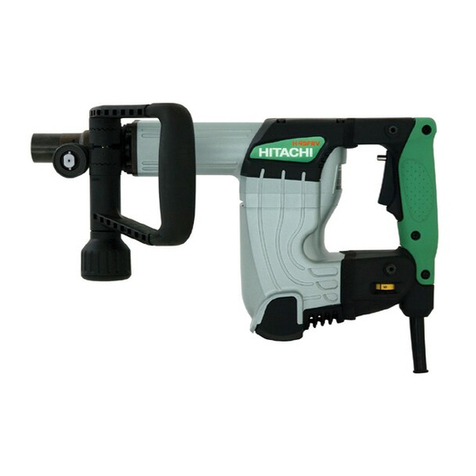
Hitachi Koki
Hitachi Koki H45FRV instruction manual

DeWalt
DeWalt DCMAS5713X1 Original instructions
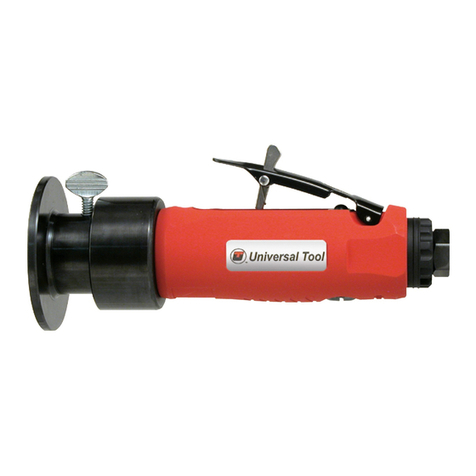
Universal Tool
Universal Tool UT8726 operating instructions
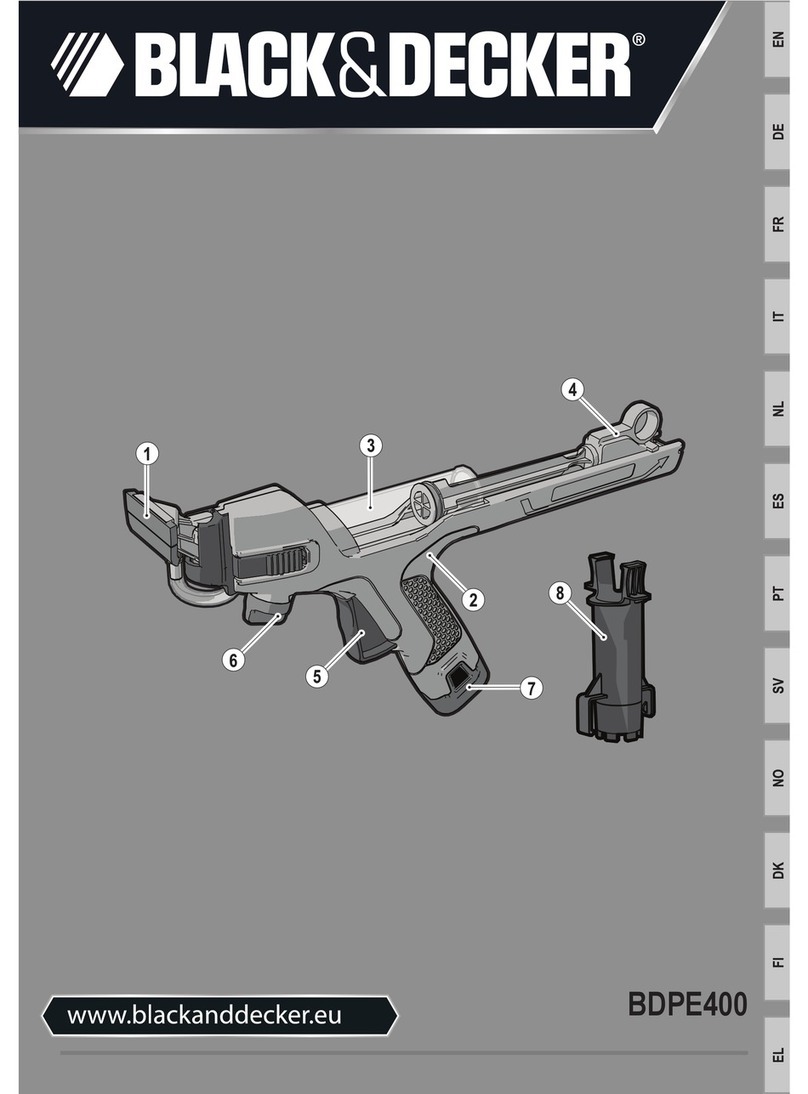
Black & Decker
Black & Decker BDPE400 manual
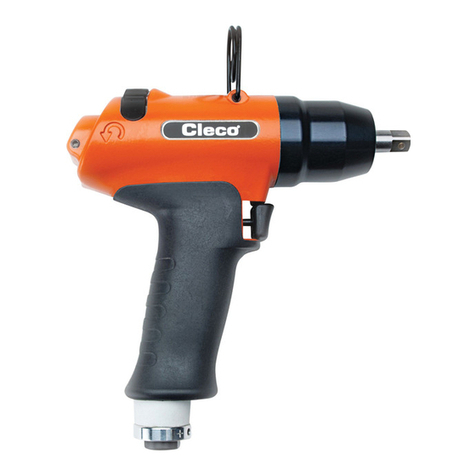
Cleco
Cleco Cleco 110PTHD instruction manual
